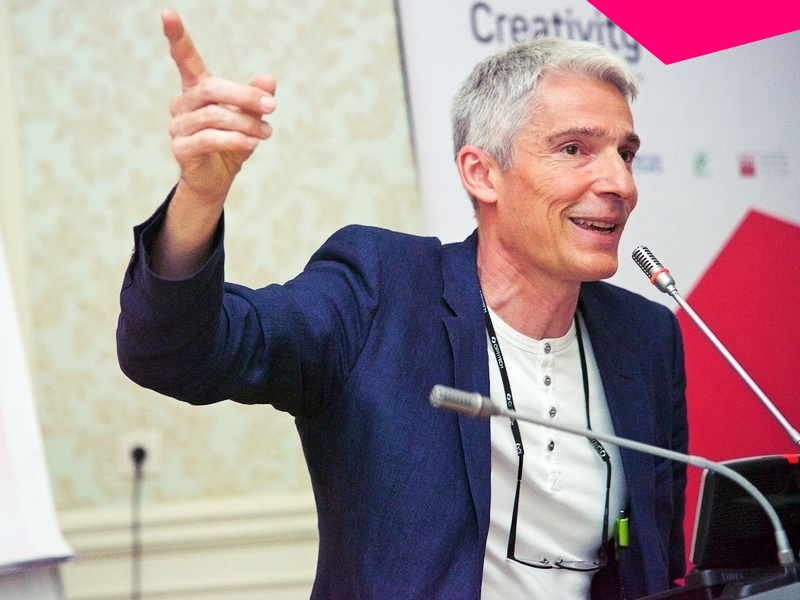
Mass media not only inform but also shape public opinion
Form: The media are fairly politicised. The Ukrainian magazine Novoye Vremya went against the current when it chose to publish on the cover of one of its issues the portraits of the top 10 people who had created important projects in the cultural field instead of the usual portraits of politicians. The editor explained the decision by saying that in talking about politics we talk about the past, whereas the development of creative industries is the future. In a situation where the media cannot influence policy, they can work on a topic that has the potential to boost development of the country.

Frequency and consistency: Journalists see errors in the system, acute social problems and feel obliged to write about them. But not all journalists have enough strength for the second and third story—to cover it until the end and see whether anything has changed as a result of the publication. An example of a systematic media campaign, during which journalists and editors refused to give up, is the Give Birth the Proper Way initiative of the team of Gazeta Wyborcza, the most popular Polish newspaper. What began as a series of articles on the healthcare system issues turned into a social movement and resulted in the reform of the obstetric care system and changes to legislation. The campaign benefited from consistency, the use of various article types, partnership between a number of media outlets, making a huge impact on the resolution of social problems.
Content: Is there a work method to create interesting content for a magazine without undermining the publication’s financial status? For example, platfor.ma, a profitable Ukrainian media outlet covering culture and education, was able to attract a large audience with high-quality texts. Their secret is special projects in collaboration with partners. Their success conditions are a keen understanding of the fine line between advertising and content, for which the readers keep returning.
Journalist as a brand: People know journalists and trust them. Why not leverage that? Invest in your personal brand. After all, readers often choose not the media outlet but rather a journalist working there. Today, many bloggers have an audience that often exceeds in number those of popular media outlets. Finding solutions to social problems can become a part of your brand. For example, in the early 2000’s, the American journalist Nicholas Kristof managed to attract the attention of the society to the genocide in Darfur. As a result, a topic that was of little interest to readers ended up on the front pages of newspapers. Recognition is an excellent tool to be able to talk about what matters and contribute to solving social problems.
Creativity and contrasts: “I can’t stand my chair, it’s too soft”, “Oh, the wait for my visit to the dentist is too long”, “I’m sick of this video game”—until recently you could read such messages in social media with the hashtag #firstworldproblems. The WATERisLIFE organisation decided to demonstrate how “important” these problems are compared to the lack of drinking water and famine. Using the hashtag #firstworldproblems, they began to publish information about people from regions where drinking water is a luxury. The impact was huge. New tweets with the old hashtag were simultaneously seen by 1.2 million people, whereas the video made for the campaign got 35 million views on YouTube. In its first month, WATERisLIFE’s campaign received donations that covered 1 million days of drinking water use. Indeed, everything becomes clearer when compared to something else—one should just compare and contrast the two realities.




